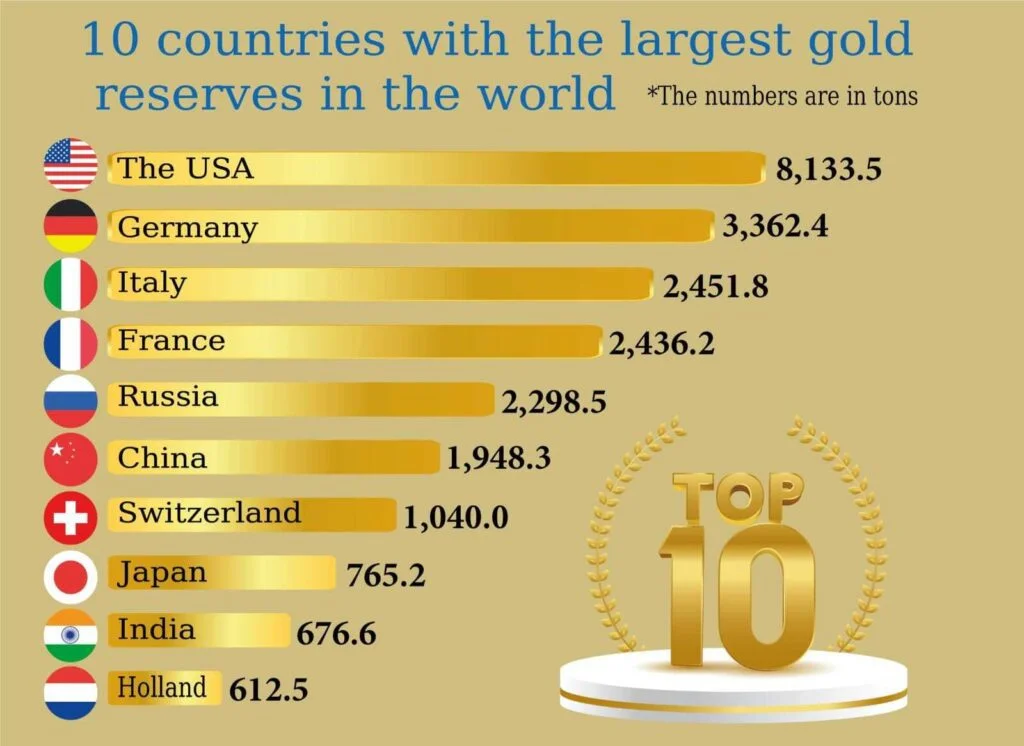Gold has long been regarded as a valuable commodity, both as a material for jewelry and as a safe-haven asset during times of economic uncertainty. Recently, there has been a significant rise in the price of gold on the global market, a trend driven in part by increased government purchases of gold. This development has far-reaching implications for the global economy, influencing everything from inflation to international trade balances.

Several factors contribute to the rising price of gold globally. Firstly, economic instability and geopolitical tensions often drive investors towards gold as a safe-haven asset. Events such as trade wars, political unrest, or global pandemics create uncertainty in the financial markets, prompting investors to seek refuge in gold, which traditionally holds its value better than other assets during turbulent times.
Secondly, inflationary pressures are a significant driver of gold prices. With central banks around the world adopting loose monetary policies, including low-interest rates and large-scale asset purchases, there’s been an increase in money supply. This often leads to higher inflation, reducing the purchasing power of currencies. As a result, investors turn to gold to protect their wealth from the eroding effects of inflation.
Another critical factor is the strength of the US dollar. Gold prices typically have an inverse relationship with the US dollar; when the dollar weakens, gold prices tend to rise. Given that gold is priced in dollars, a weaker dollar makes gold cheaper for foreign investors, boosting demand and driving up prices.
In recent years, there has been a noticeable trend of governments, particularly in emerging markets, increasing their gold reserves. This is driven by several strategic considerations. Firstly, diversifying away from US dollar assets is a crucial motive. Countries like China and Russia have been steadily reducing their reliance on the dollar due to geopolitical tensions and the desire to mitigate the risks associated with holding large amounts of US debt.
Secondly, increasing gold reserves is part of a broader strategy to enhance economic sovereignty and stability. Gold is seen as a tangible asset that can support national currencies and bolster financial stability during crises. By holding substantial gold reserves, governments aim to protect their economies from external shocks and reduce their vulnerability to global financial market volatility.
The increasing purchase of gold by governments has significant implications for the global economy. One immediate impact is on the supply-demand dynamics of the gold market. As demand from central banks rises, it creates upward pressure on gold prices. This can lead to a wealth transfer from gold-producing countries to those that import gold, potentially impacting trade balances and economic growth rates.

Higher gold prices also influence inflation. While gold itself does not generate inflation, the factors driving its price up, such as loose monetary policies and increased money supply, do. Additionally, higher gold prices can lead to increased costs for industries that rely on gold as an input, such as jewelry and electronics manufacturing. These increased costs can be passed on to consumers, contributing to higher overall inflation rates.
Furthermore, higher gold prices can affect investor behavior. With gold offering a potentially higher return, it may attract more investment capital, diverting funds from other asset classes such as stocks and bonds. This can impact equity markets and potentially lead to increased volatility as investors rebalance their portfolios.
Looking ahead, the trend of rising gold prices and increased government purchases is likely to continue. The ongoing geopolitical uncertainties, particularly involving major economies like the US, China, and Russia, are expected to persist, maintaining gold’s appeal as a safe-haven asset. Additionally, with global debt levels at historic highs, the likelihood of continued loose monetary policies and inflationary pressures remains high, further supporting gold prices.
Moreover, the shift towards de-dollarization is expected to gain momentum. As more countries seek to reduce their dependency on the US dollar, they will continue to increase their gold reserves. This trend will likely be supported by the ongoing development of alternative international payment systems and the rise of digital currencies, which could further diminish the dominance of the US dollar in global trade and finance.
In conclusion, the rise in gold prices globally, driven by increased purchases by various governments, has significant implications for the global economy. It reflects underlying economic and geopolitical uncertainties and the strategic moves by countries to diversify their reserves and enhance economic stability. While this trend poses challenges such as higher inflation and market volatility, it also underscores the enduring value of gold as a store of wealth. As these dynamics continue to evolve, gold is likely to remain a critical asset in the portfolios of both governments and private investors, shaping the future economic landscape.



Leave a Reply